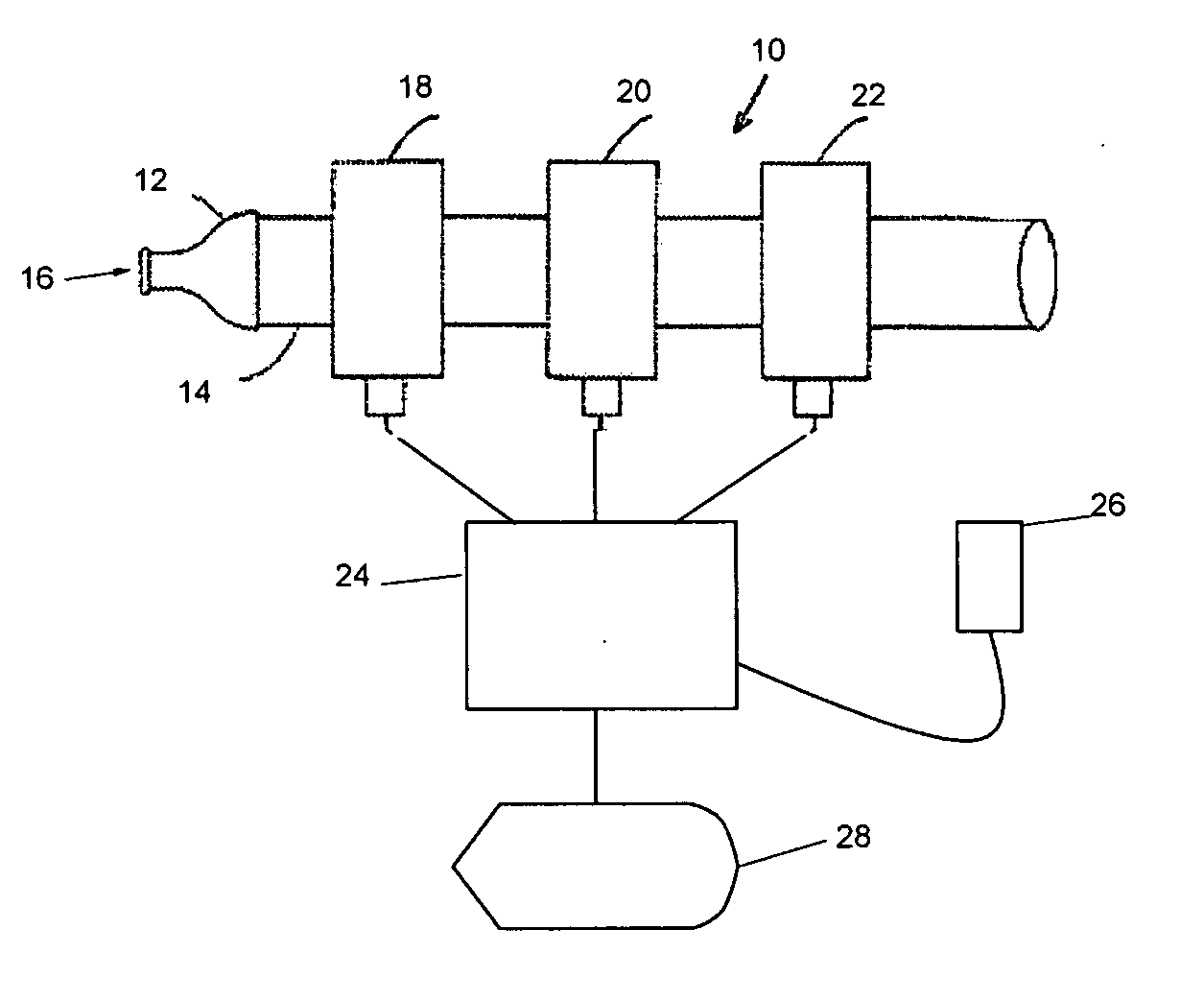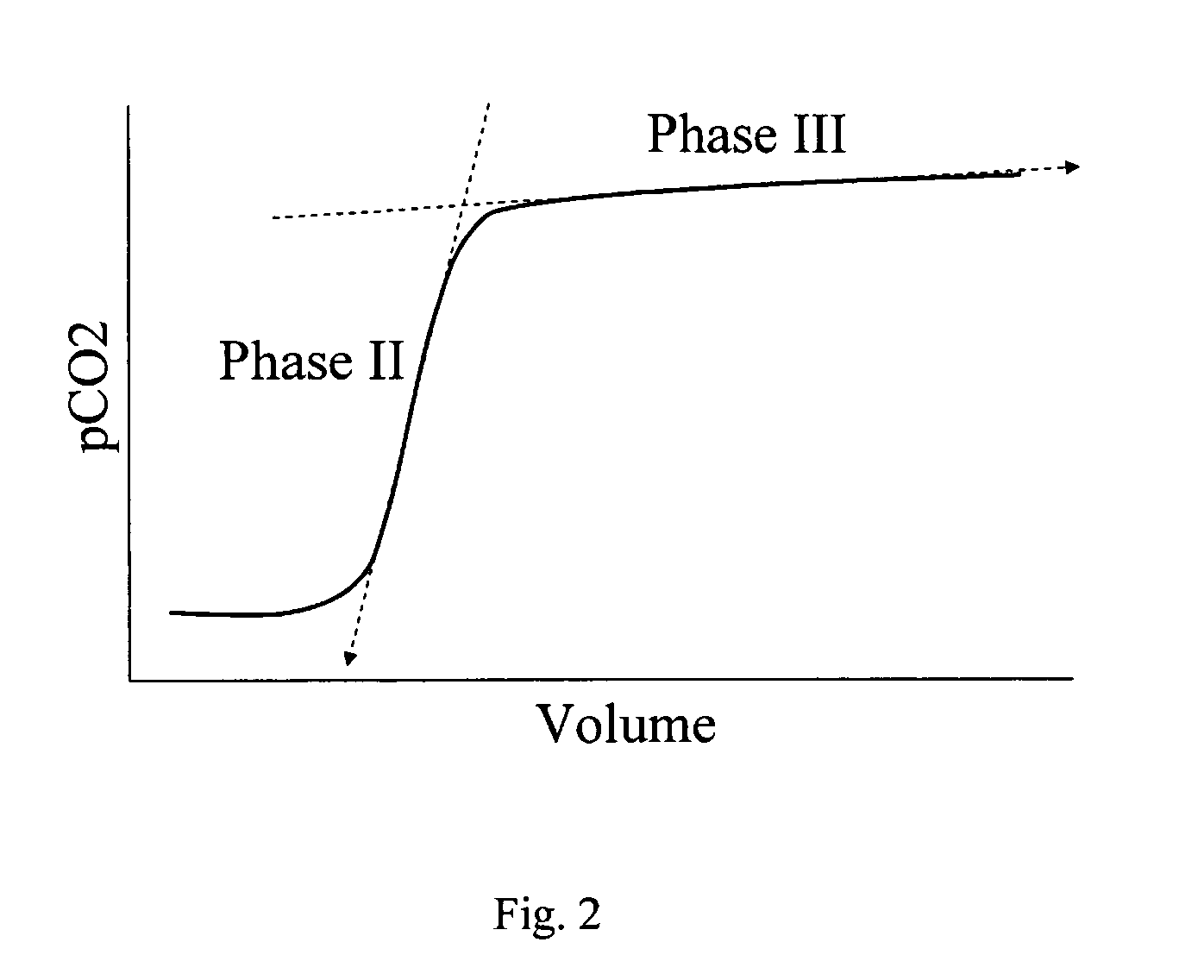System and method for determining airway obstruction
a technology of airway obstruction and system, applied in the field of diagnostics of airway obstruction, can solve the problems of inability to quantify, inability to reliably detect abnormally low readings, and inability to accurately diagnose the condition, so as to achieve less effort-dependent and easy to reproduce
- Summary
- Abstract
- Description
- Claims
- Application Information
AI Technical Summary
Benefits of technology
Problems solved by technology
Method used
Image
Examples
Embodiment Construction
[0031] Referring now to the drawings, wherein like numerals refer to like parts throughout, there is seen in FIGS. 1 and 2 two graphs depicting the measurement of expired PCO2 (capnograms) as a function of time and volume, respectively, in a normal patient. A patient having an acute airways obstruction will demonstrate altered geometry of these curves, as seen in FIGS. 3 and 4. The two components of the expired capnogram that are affected by airways obstruction are the slopes of the plotted curves in the areas designated as Phase II and Phase III. Phase II represents the volume of breath that empties the conducting airways of the lungs, including the trachea and bronchioles. This volume is collectively termed the airway or anatomic deadspace portion of expired breath. Phase III depicts the partial pressure of CO2 (pCO2) contained within gas expired from the alveoli. As seen in FIGS. 1 and 2, the slope (or first derivative) of Phase II is generally high in normal patients. The high s...
PUM
 Login to View More
Login to View More Abstract
Description
Claims
Application Information
 Login to View More
Login to View More - R&D
- Intellectual Property
- Life Sciences
- Materials
- Tech Scout
- Unparalleled Data Quality
- Higher Quality Content
- 60% Fewer Hallucinations
Browse by: Latest US Patents, China's latest patents, Technical Efficacy Thesaurus, Application Domain, Technology Topic, Popular Technical Reports.
© 2025 PatSnap. All rights reserved.Legal|Privacy policy|Modern Slavery Act Transparency Statement|Sitemap|About US| Contact US: help@patsnap.com



